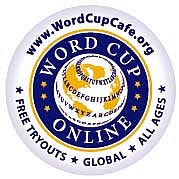 Great, useful research by Internet guru Jakob Nielsen from “Alertbox: Current Issues in Web Usability” on how users read on the Web and how authors should write their Web pages. Numerous topics include:
Great, useful research by Internet guru Jakob Nielsen from “Alertbox: Current Issues in Web Usability” on how users read on the Web and how authors should write their Web pages. Numerous topics include:
- How users read on the Web
- How little do users read? - users spend 4.4 seconds for every extra 100 words on a page
- F-shaped pattern for reading web content, as seen in eyetracking studies
- American English vs. British English
- Twitter Postings: Iterative Design
- Writing style for print vs. Web
- Write inverted pyramids in cyberspace
- Eyetracking of people reading email newsletters
- Low-literacy users exhibit different behaviors
- PR and press releases on corporate websites (103 design guidelines based on usability studies of how journalists visit company sites)
- Blah-blah text: Keep, cut, or kill?
- Email newsletters (165 design guidelines: scannability even more important than for websites)
- Writing transactional email and confirmation messages
- Long vs. short articles as content strategy
- Microcontent: writing headlines, page titles, and email subject lines
- Teenagers on the Web: poor reading skills and low patience levels mean that text has to be ultra-concise for teens and that more information must be communicated in images
- Tagline blues: what’s the site about?
- Passive voice is redeemed for Web headings
- World's Best Headlines: BBC News
- Use old keywords when writing to be found by search users
- Show numbers as numerals when writing for online readers
- Nanocontent: the first two words of links and titles
- Company name first in microcontent? Sometimes!
- Kindle Content Design (writing for Amazon.com’s e-book reader)
- iPad and Kindle Reading Speeds
- Information pollution
- Distributing Content Through Social Networks and RSS (Facebook, Twitter, MySpace, LinkedIn, and RSS)
- Corporate Blogs: Front Page Structure
- Intranet usability, including guidelines for intranet content, news on intranets, HR manuals, and how to present information about projects, teams, and individuals on intranets
- Full paper documenting the original research from 1997 (long): Concise, SCANNABLE, and Objective: How to Write for the Web (unfortunately this paper was written for print and not online)
- Case study: Applying Writing Guidelines to Web Pages improved usability by 159% when rewriting sample pages from a popular website
- How to write “About Us” pages for a company's or organization’s website







